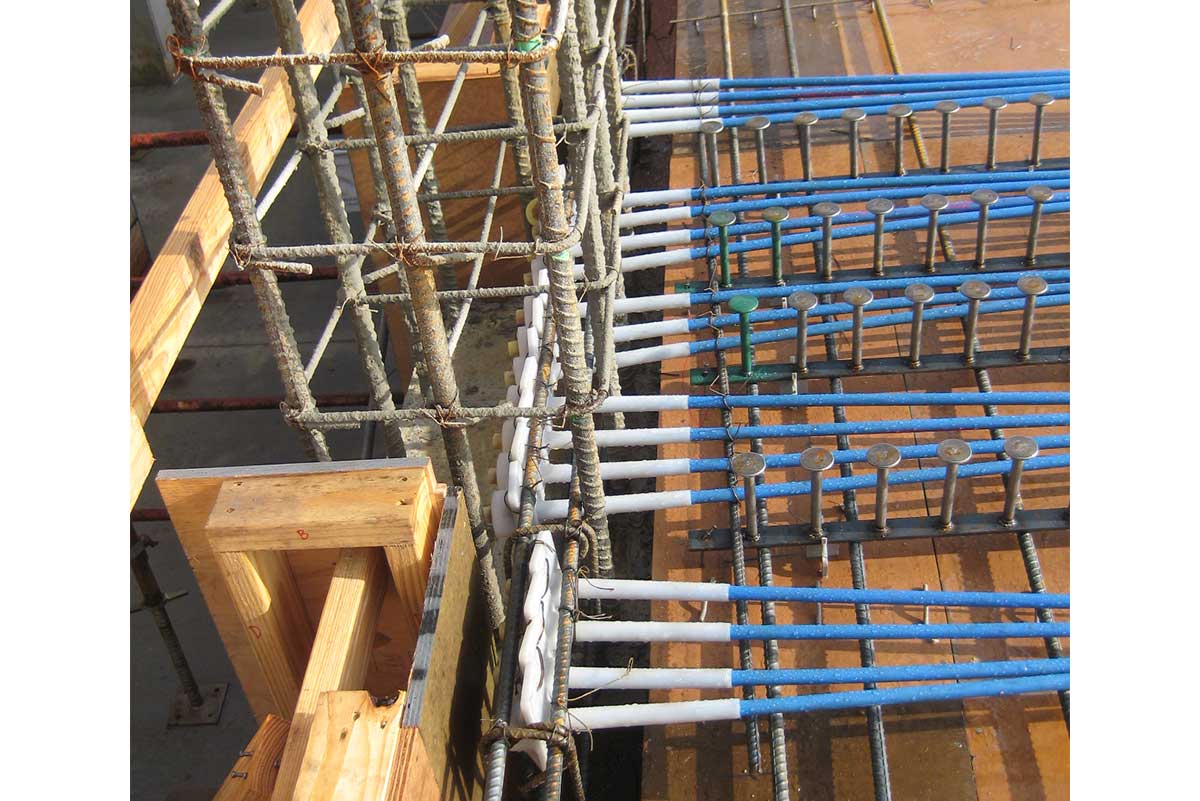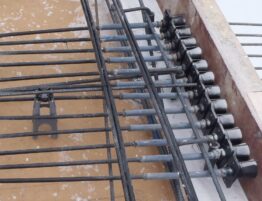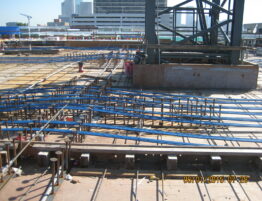
Anatomy of an Unbonded Post-Tension Tendon
We’ve talked briefly about the anchorages that are required to transfer the force in post-tension tendons, but we’ve been vague about the anatomy of the rest of the tendon. Each piece is critical to the system as a whole.
First, there’s the cable itself. The vast majority of unbonded cable is nominally 1/2 inch in diameter, composed of 7 wires each about 1/6th of an inch across, with a design area of 0.153 square inches. The minimum ultimate tensile strength is 270,000 pounds per square inch – meaning that the minimum force required to break the strand is over 20 tons. The shop buys enormous spools of this cable to turn into post-tension tendons. At the shop, the cable is run through a machine that coats the tendon in a special grease, and then extrudes a seamless plastic coating that holds the whole mess together.
The grease is formally called “post-tension coating.” It’s a mineral grease that’s been soaped with lithium until it has the consistency of warm peanut butter. There are 3 purposes for using this material. One, the grease is slippery – it lubricates the tendon so that the cable slides easily in its sheath. Two, it’s water-absorbing – the lithium soap means that the grease can absorb up to its own weight in water, keeping the water from reaching the steel cable it’s protecting. Three, it keeps the hot sheathing from sticking to the steel tendon during fabrication and ensures that there’s space for the tendon to move during stressing. The PTI “Specification for Unbonded Single-Strand Tendons” specifies a minimum of 2.5 pounds per one hundred feet of tendon; this translates to a nominal inner sheathing diameter of at least 0.53 inches.
The seamless plastic sheathing is the last step. The primary purpose of the sheathing is to hold everything together, but it also works to preserve the opening in the concrete for the tendon to slide through. Early post-tensioning systems were wrapped in paper, and when the tendons were tied into their profiles, it was possible for the wire to “choke” the tendons, greatly increasing the friction at that point. Today, this sheathing is made of High-Density Polyethylene (HDPE), chosen not only for strength and ease of working, but also to be non-reactive with reinforcing steel, concrete, and post-tension coating.





